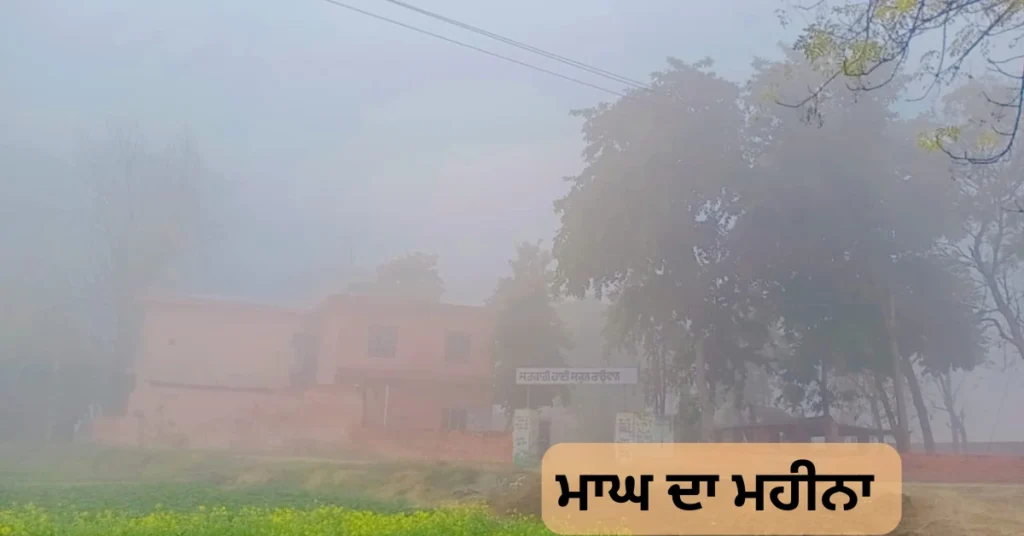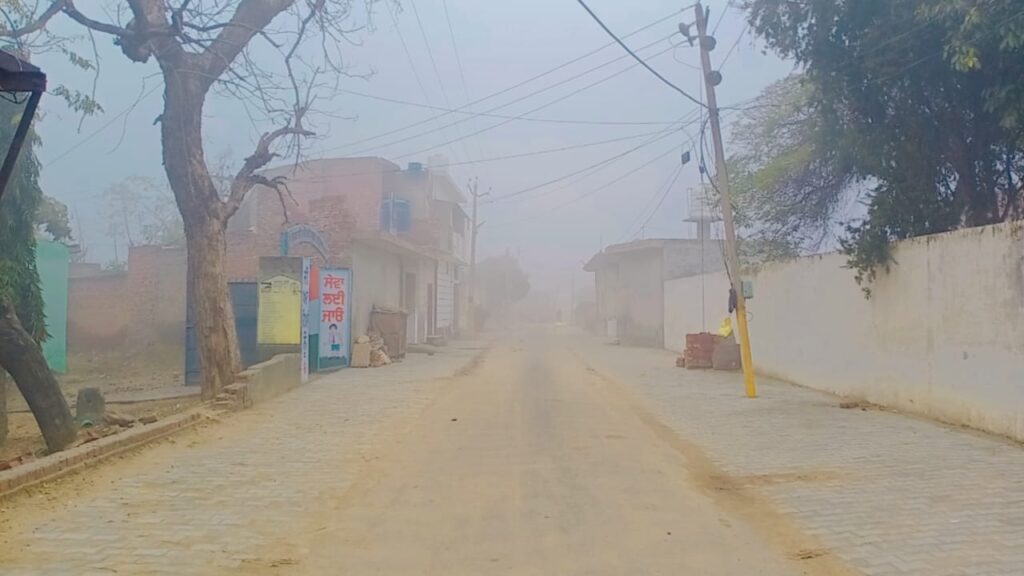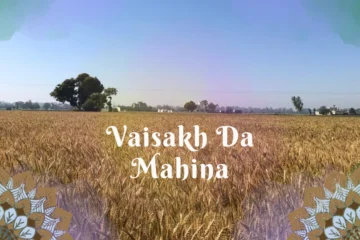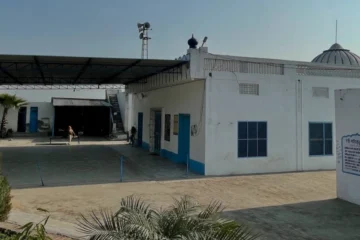
Introduction to Magh Da Mahina
Magh Da Mahina, or the month of Magh, is deeply significant in the cultural and spiritual calendar of Punjab. It is not just a period marked by festivities but also a time for reflection, gratitude, and connection with divine energies. Magh, the eleventh month in the Nanakshahi calendar, holds historical, religious, and cultural importance for Punjabis.
The chilly weather of January and February adds to the charm, as families gather to celebrate togetherness and offer prayers for prosperity. It is during this month that people reconnect with age-old traditions, making it a cornerstone of Punjabi heritage.
Significance of Magh in Sikhism
For Sikhs, Magh resonates deeply with the teachings of Dhan Dhan Shri Guru Gobind Singh Ji, the tenth Sikh Guru, whose life and philosophy have shaped the foundation of Sikhism. This month emphasizes spiritual practices such as reciting Gurbani, performing kirtan (devotional singing), and engaging in seva (selfless service).
These acts of devotion are seen as a path to attain inner peace and divine blessings. The month is also a reminder of humility, community, and the importance of living a righteous life. Gurudwaras are beautifully adorned, and special programs are held to inspire devotees to walk the path of Sikh teachings.
Historical Context of Magh Da Mahina
The roots of Magh in Punjab can be traced back to ancient times when the region was predominantly agrarian. This month represented a transitional phase between winter and the preparation for spring sowing. Farmers, who form the backbone of Punjab, saw this time as an opportunity to give thanks for the previous harvest while preparing for the new one.
Rituals and traditions developed around this period reflect the gratitude and hope associated with an agrarian lifestyle. Over time, these customs became intertwined with religious and cultural practices, creating a vibrant tapestry of events that define Magh Da Mahina.
Cultural Practices in Magh
Lohri: The Festival of Warmth and Joy
Lohri, celebrated on the eve of Maghi, is one of the most cherished festivals of Punjab. It symbolizes the end of the harsh winter and the onset of longer, warmer days. The bonfire, the centerpiece of the celebration, represents a source of light and warmth.
Families gather around it, tossing offerings such as sesame seeds, popcorn, and jaggery into the flames as a gesture of gratitude. Songs and dances like the bhangra and giddha add a joyous rhythm to the evening. Lohri is especially significant for families with new beginnings, such as the birth of a child or a marriage, as it is seen as a blessing-filled event.
Maghi: A Day of Remembrance
Maghi, celebrated the day after Lohri, is a day steeped in historical and spiritual significance. It commemorates the martyrdom of the Chali Mukte (Forty Liberated Ones), who sacrificed their lives fighting alongside Dhan Dhan Shri Guru Gobind Singh Ji in the Battle of Muktsar Sahib.
Devotees wake up early to take a holy dip in rivers or sacred tanks, a ritual believed to cleanse the soul. The day is marked by prayer and reflection, with many visiting Gurudwaras to honor the bravery and faith of the Chali Mukte. Special kirtans and langars (community meals) further enrich the spiritual experience of this sacred day.
Traditional Foods of Magh
Magh is a time when the culinary heritage of Punjab takes center stage. Traditional dishes, prepared with seasonal ingredients, not only provide nourishment but also reflect the cultural richness of the region. Sarson da saag (mustard greens) paired with makki di roti (cornmeal flatbread) is a staple during this time. Also, Kheer (Rice Puding) is the main sweet dish on Maghi. People used to say “Poh rijhi Magh Khadhi” (Mean it cooks on Lohri Night which is in Poh month and eat a day after)
These dishes are often served with a generous dollop of homemade white butter, enhancing their flavor. Sweet treats like rewri, gajak, and til ladoos, made from sesame seeds and jaggery, are distributed among family and friends. These foods are not just delicious but also packed with nutrients that help combat the cold weather.
Spiritual Practices During Magh
Spirituality is at the heart of Magh Da Mahina. Sikhs devote themselves to reading and listening to Gurbani, the sacred scriptures, as a way to gain wisdom and spiritual enlightenment. Many also perform nitnem, the daily prayers, with greater intensity during this month.
Seva plays a vital role, whether it’s volunteering at a Gurudwara or helping those in need. This focus on spirituality is a reminder of the core Sikh values of humility, service, and devotion. People also make a conscious effort to detach from material concerns and focus on their inner journey during Magh.
Seasonal Changes and Their Impact
Magh is a transitional period that bridges winter with the promise of spring. For farmers, it is a crucial month for preparing fields for the next planting season. Wheat crops, which dominate Punjab’s agricultural landscape, require close attention during this time.
The season’s fruits and vegetables, such as carrots, radishes, and jaggery, not only provide sustenance but also symbolize abundance and health. The month’s activities align with nature’s rhythms, creating a balance between hard work and spiritual reflection.
Folklore and Stories of Magh Da Mahina
Magh is rich in oral traditions that have been passed down through generations. Elders recount stories of valor, devotion, and miracles associated with the month, keeping Punjab’s cultural legacy alive. One popular tale is the story of the Chali Mukte, whose sacrifice is celebrated during Maghi.
Folktales often carry moral lessons, teaching the younger generation about courage, faith, and resilience. These stories, often told by the fireside, foster a sense of pride and continuity in Punjabi culture.
Community Gatherings and Fairs
Magh Da Mahina is incomplete without the vibrant fairs and community events that bring people together. Melas (fairs) held in various parts of Punjab showcase local crafts, music, and traditional games. These gatherings serve as a platform for social bonding, where people reconnect with old friends and make new ones.
Performances of folk songs, dances, and the rhythmic beats of the dhol enliven the atmosphere. The fairs also offer an opportunity for people to buy handmade goods, enjoy traditional foods, and celebrate the richness of Punjabi culture.

Importance of Charity During Magh
Charity holds a special place in Punjabi culture, and Magh is seen as an auspicious time for giving. Acts of charity, whether through donations, feeding the hungry, or supporting community projects, are believed to bring blessings. As Magh is a cold month in the winter season in Punjab, people also donate clothes to the needy.
Many Sikhs engage in dasvandh, the practice of contributing a tenth of their earnings for communal welfare. This spirit of giving not only strengthens community bonds but also uplifts the less fortunate, reflecting the core values of kindness and generosity.
Modern Celebrations of Magh
While the essence of Magh remains unchanged, modern lifestyles have brought subtle changes to its celebrations. Urban Punjabis may not have access to traditional fields or bonfires, but they find ways to recreate the spirit of the season in their homes and communities.
Social media and digital platforms have made it easier to share festive greetings and connect with loved ones. Despite these changes, the core values of gratitude, devotion, and togetherness continue to define Magh Da Mahina, bridging the past with the present.
Lessons from Magh Da Mahina
Magh teaches timeless lessons about gratitude, faith, and community. It reminds us of the importance of staying grounded while embracing life’s transitions with hope and determination. The traditions and practices of this month encourage a balance between spiritual growth and practical living, making its relevance timeless.
Conclusion
Magh Da Mahina is a tapestry woven with threads of history, spirituality, and culture. It reflects the resilience, faith, and unity that define Punjab and its people. As we honour the traditions of this month, we ensure that its rich heritage continues to inspire future generations. Magh is not just a time for celebrations but also an opportunity to grow, give, and connect.
Read More
https://raowal.com/winter-in-punjab-from-sarson-da-saag-to-foggy-mornings/
FAQs: Magh Da Mahina
What is the significance of Magh Da Mahina?
Magh Da Mahina is significant for its cultural, spiritual, and historical importance. It is a time of devotion, community bonding, and celebration.
Why is Lohri celebrated in Magh?
Lohri marks the end of winter and celebrates the harvest. It symbolizes gratitude and joy, with families gathering around bonfires.
What foods are popular during Magh in Punjab?
Foods like sarson da saag, makki di roti, rewri, kheer, and gajak are popular. These dishes provide warmth and are packed with nutrients.
How do Punjabis observe Maghi?
Punjabis observe Maghi by taking holy dips, remembering the Chali Mukte, and participating in prayers and langars at Gurudwaras.
What is the role of spirituality in Magh Da Mahina?
Spirituality plays a central role, with Sikhs focusing on Gurbani, seva, and self-reflection to strengthen their connection with the divine.


